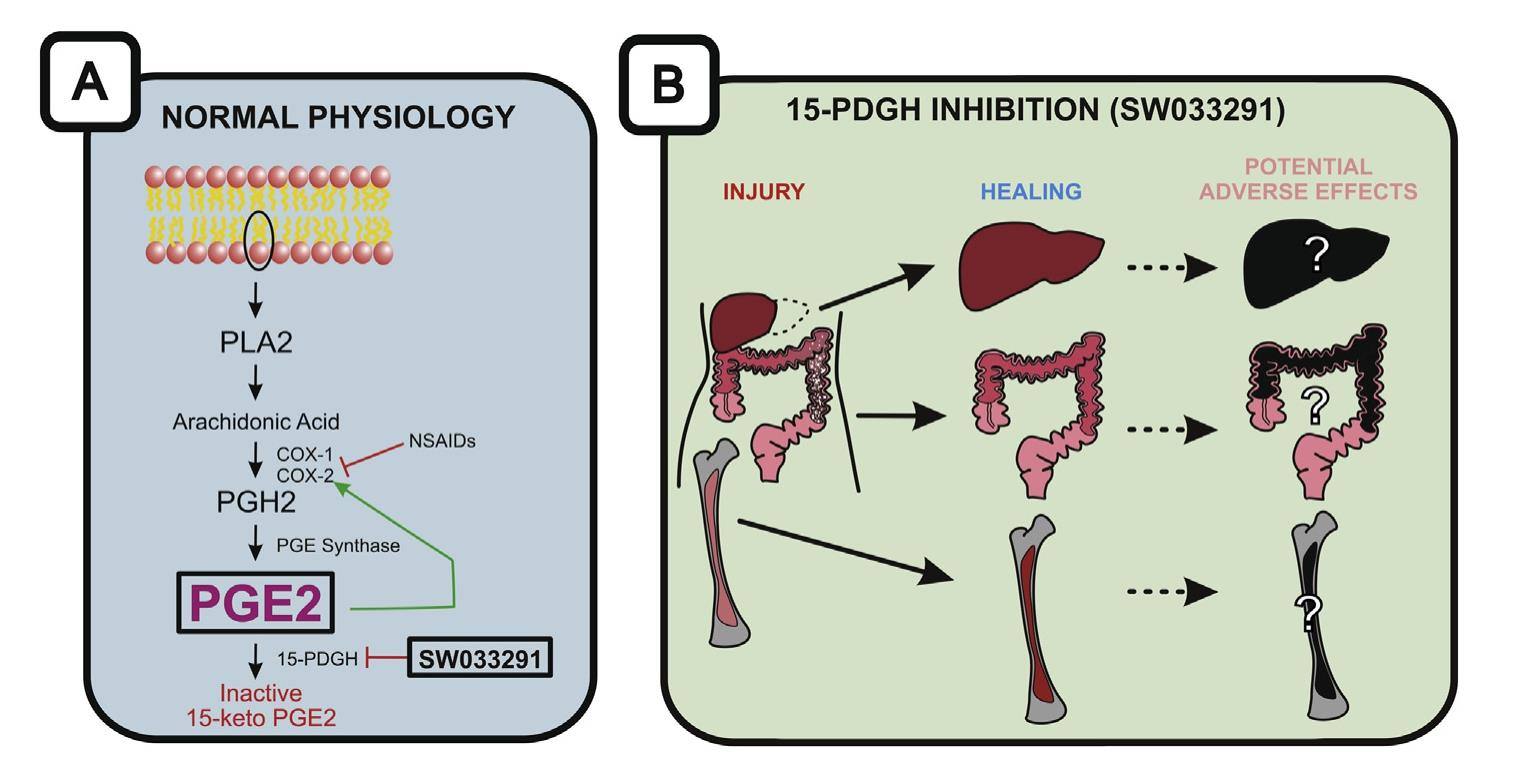
Damage control: Harnessing prostaglandin E2 as a potential healing factor of tissue injuries


Increasing prostaglandin E2 by knocking out its inhibitor 15-hydroxyprostaglandin dehydrogenase (15-PDGH) or administering a compound that inhibits 15-PDGH was recently found to improve healing in hematopoietic stem cell transplants, colitis recovery, and hepatogenesis after transection in mice. These results are suggestive of pharmacologic therapies or even genetic therapy that could improve patient outcomes, especially since the excess PGE2 and the 15-PDGH inhibitor have proven to be non-toxic. However, elevated levels of PGE2 are associated with increased risk of cancer and blood clotting problems. It would be un-acceptable to treat a cancer patient with chemotherapy and replenish the hematopoietic stem cells with the help of PGE2, only to have increased expression of PGE2 and induce another cancer. Therefore, to assess the most therapeutic aspects of PGE2, it is important to consider effects that could induce disease.
